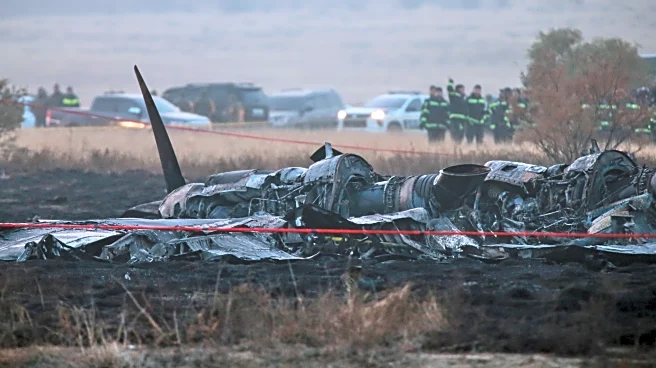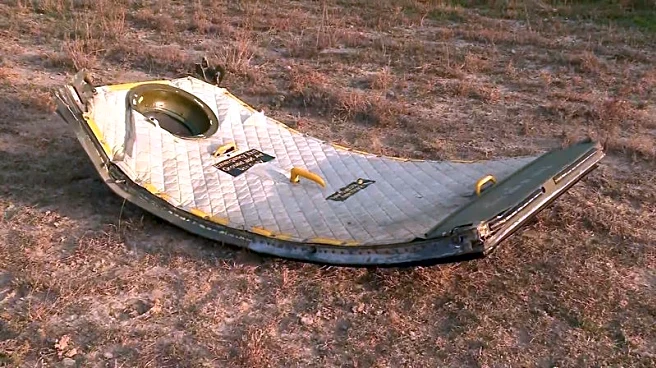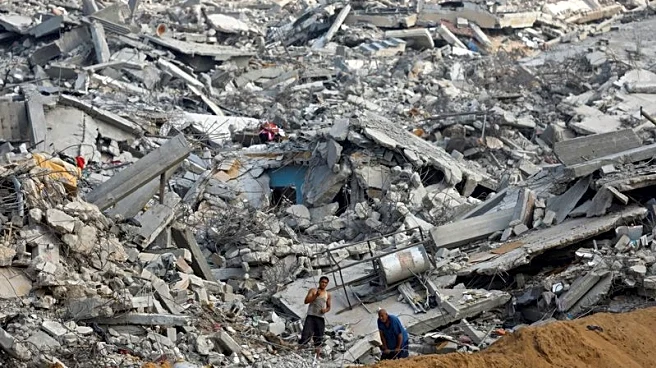What's Happening?
Archaeologists in Turkey have discovered a 1,500-year-old Christian floor mosaic at Urfa Castle, located in the city of Urfa, traditionally considered the birthplace of Abraham. The mosaic, dating back
to the fifth century AD, was constructed between 460 and 495 AD. The site, formerly known as the Mesopotamian city of Edessa, has been a pilgrimage destination for both Muslims and Christians. The mosaic features geometric patterns, animal and plant motifs, and an inscription in Koine Greek. Additionally, three burials of religious officials and medallion-shaped mosaics representing air, water, earth, and fire were found. Excavation leader Gülriz Kozbe suggests the mosaic was part of a Christian site, possibly a church or shrine dedicated to martyrs. The discovery was reported by Anadolu Agency, a state-run outlet based in Ankara.
Why It's Important?
The discovery of the mosaic at Urfa Castle is significant as it provides insights into early Christian religious practices and rituals. The symbols depicted in the mosaic, particularly those representing natural elements, offer clues about the religious ceremonies that were once conducted at the site. This find contributes to the understanding of the historical and cultural heritage of Urfa, enhancing its value as a tourist destination. The mosaic's connection to high-ranking church figures, such as Bishop Kyros and Chief Priest Elias, underscores the importance of the site in the religious hierarchy of the time. The discovery also highlights the ongoing efforts to preserve and restore historical sites in Turkey, particularly following the damage caused by the February 2023 Turkey-Syria earthquakes.
What's Next?
The governor of Urfa, Hasan Şıldak, has announced plans to complete the restoration of Urfa Castle and open it to visitors by late 2026. The newly discovered mosaic is expected to add cultural and scientific value to the region's tourism and history. As restoration efforts continue, the mosaic will likely become a focal point for visitors interested in the historical and religious significance of the site. The discovery is part of a series of recent archaeological finds in Asia Minor that shed light on early Christianity, including a Roman hospital-turned-Christian sanctuary in Kaunos and over 60 tombs in Colossae.
Beyond the Headlines
The mosaic's discovery at Urfa Castle not only enriches the historical narrative of the region but also raises questions about the interplay between different religious traditions over time. The site's historical significance as a pilgrimage destination for both Muslims and Christians highlights the cultural and religious diversity that has characterized the region for centuries. The preservation and study of such artifacts contribute to a deeper understanding of the shared heritage and historical connections between different faiths.













